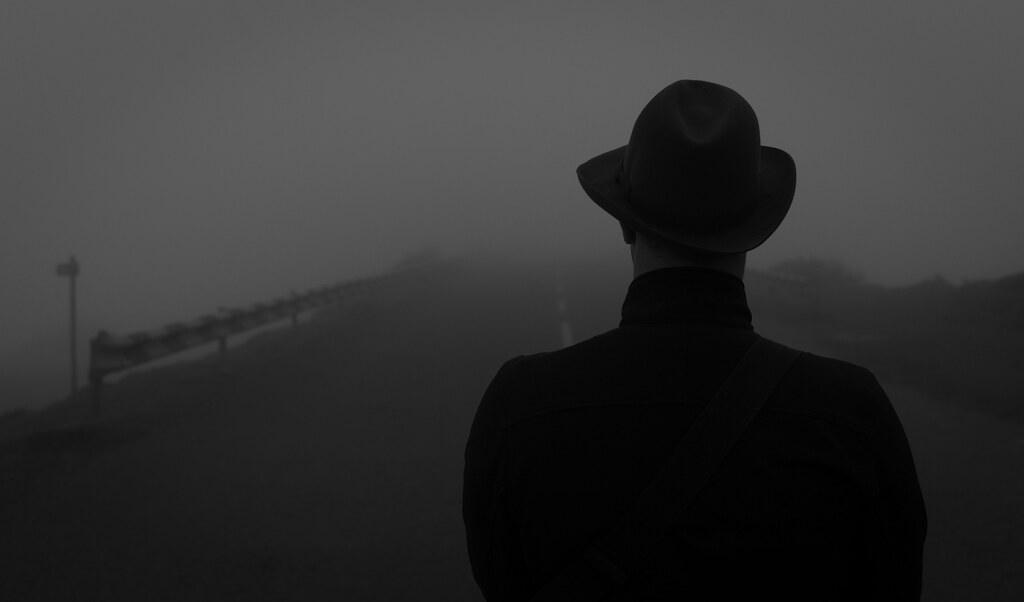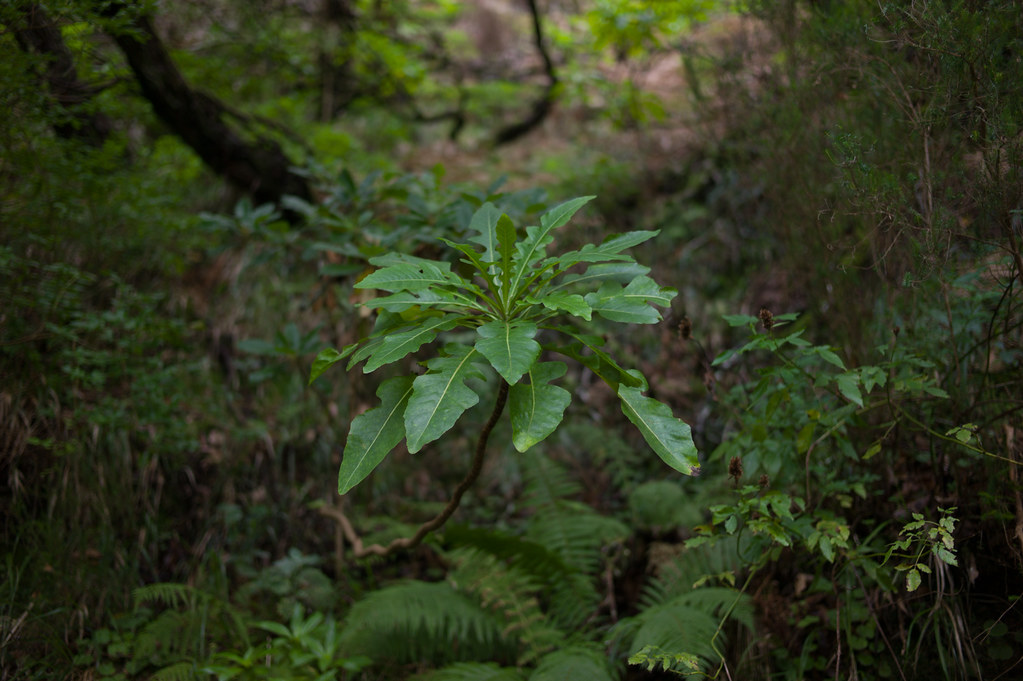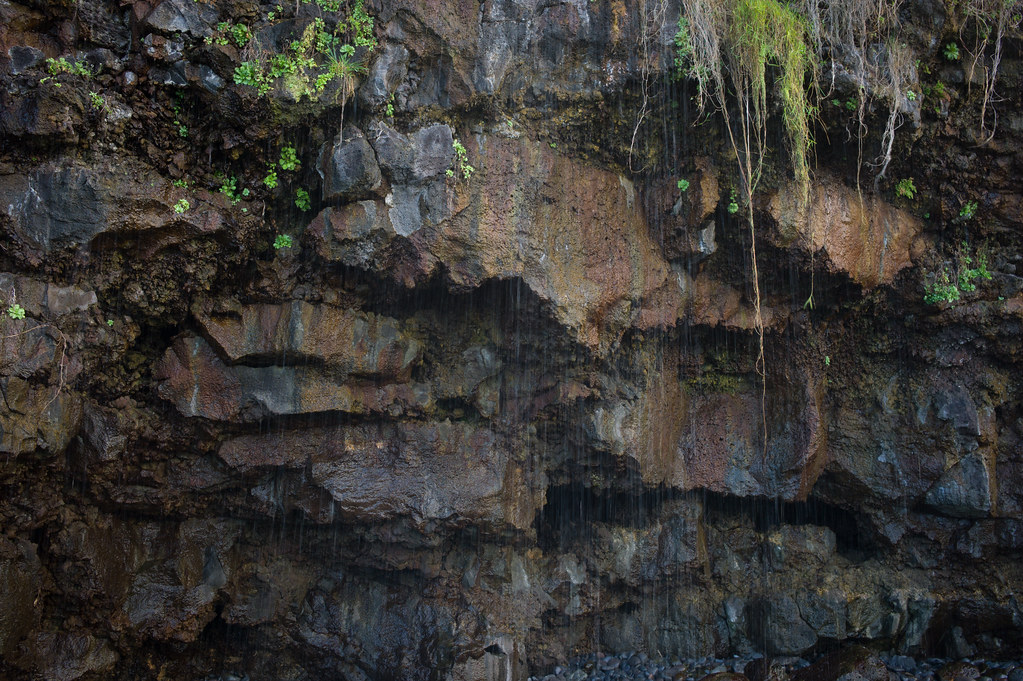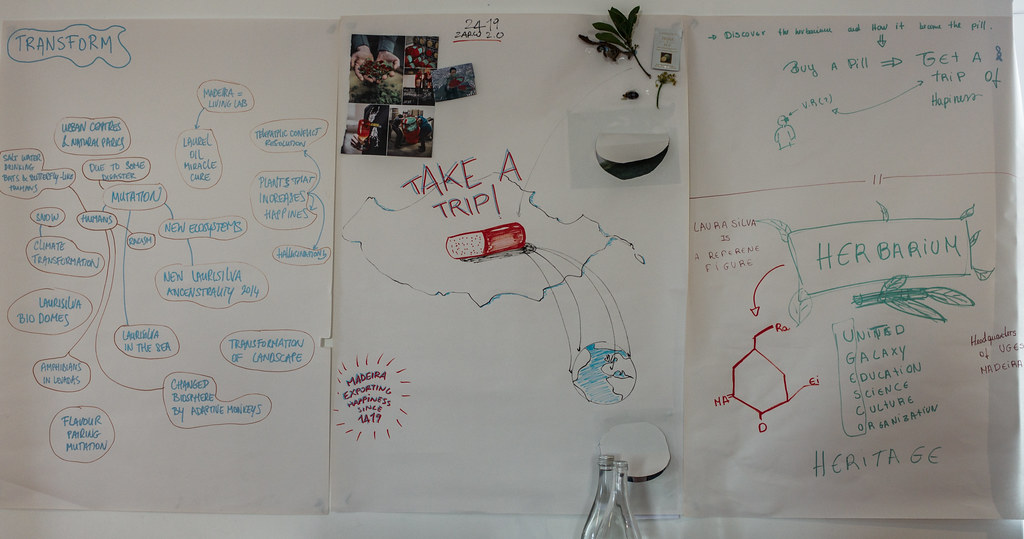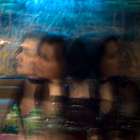Experiencing the intangible
Posted Nov. 14, 2014 by Maja Kuzmanović
Nik Gaffney and I spent the first week of November in Madeira conducting the Laurisilva Futures workshop and speaking at the Prototyping the Intangible symposium organised by the Madeira Interactive Technologies Institute, one of four partners of Future Fabulators. To honour the intangible theme of the symposium, here are a few words on my impressions, moods, memories and liminal perceptions – all the things that are perhaps not directly relevant to the events themselves, but have inevitably, in/tangibly shaped my experience of them.
The smell of salt and the sound of the ocean’s swirling, crackling breath are my first impressions of Ponta do Sol, Madeira. We’re on a volcanic island, with dark rocks and black beaches disappearing into the depths of the Atlantic. As the sun dips beneath the horizon and colours the clouds orange and purple, a nearly full moon rises illuminating the village straddled across the rough ridges. Aside from the noise of tour busses filled with grey nomads, the loud air conditioners and a fishy smell exuding from the exhaust fan, it is quite idyllic and far removed from the drizzly Brussels Nik and I left in the morning. I spend the first evening listening to the calming sound of the ocean grinding pebbles into sand, a sound that would keep Nik awake wondering how long it takes to make a sandy beach from stones.
Laura Silva’s Laurisilva
We begin the workshop with an “experience prototype”, a paper mock-up of M-ITI’s transmedia story about Laura Silva – a fictional orphan and herbalist from Madeira’s past. Valentina, Mara and Julian guide us through the village and coast, stopping to play-act parts of the story at significant locations. The experience changes the appearance of the village for me. The points where we stop become enlarged and their details more vivid: a small weed growing out of a wall gains significance, the river – now reduced to a trickle – swells to the alluvial flood that (most likely) swept the main character to her death. Later we meet for real the omnipresent Laurisilva (laurel forest), the elemental character of the story, deep in a valley beyond the central plateau.
The sun disappears in a thick mist as we ride up vertiginous windy roads, avoiding the occasional holes where parts of the road used to be. The van lurches upwards with the driver making deliberate and nauseating turns of the steering wheel. Some of us are holding our breath and others can’t help their stomachs from turning inside out. We pour out of the van high on a precipice. The air tastes even cleaner up here. Cleaner and much colder. The sun is completely obscured by clingy grey fog. Are we there yet? No, our biologist guides inform us. The Laurisilva awaits us far down in the V-shaped valley.
And down we descend… Down into the primal laurel forest. The type of forest that covered most of southern Europe during the Tertiary period (i.e. Paleocene and Pliocene), lapped by the ancient waters of the Tethys sea. Now it exists in its adapted form solely in Macaronesia, the phytogeographical region of the Azores, Madeira, Canaries and Cape Verde, named after the mythical “Islands of the Blessed”. The region is blessed indeed with a rich biodiversity. Madeira alone boasts more than 7,500 terrestrial species, a biogenetic reserve whose conservation began in earnest from the 1980s.
In Laurisilva, the air is so clean lichen adorns trees like wispy beards. This lichen can’t be found in even slightly polluted areas. It reminds me of a walk through the forests of Bhutan a few years ago. This doesn’t surprise our guide, Dr Susana Fontinha: the southern Himalayas share a similar temperate habitat to Madeira. The earth shrinks for a moment as my impressions from places half a world apart are overlaid on my perception of the present. This lasts until we reach a large specimen of arborescent dandelion, and the world becomes bigger and stranger again.
This well-known herbaceous plant used in salads and often experimented with by children in their first attempts at seed propagation has here transmogrified into a tree. The Madeiran dandelion is a giant version of its more widespread European ancestor, with morphologically recognisable serrated leaves; but it is no longer edible by humans. We’re in a forest of megaflora, eerily familiar but also quite alien. The ancient laurel forest in all its prolific biodiversity adapted to the Madeiran climate. The absence of herbivores has left these plants to explore their ecological niches undisturbed. The niches themselves adapted into something new. The European laurel (Laurus nobilis) for example mutated into the endemic Laurus novocanariensis. Its aroma is more peppery and richer than what I remember from the dwarf specimen on FoAM’s balcony. The locals use the laurel twigs to make Espetada, the Madeiran version of the kebab.
The Laurisilva is permanently humid, a water producing forest. When silence sneaks between the pauses of Susana’s botanical digressions, I can hear the forest dripping. The condensed mist slips off the laurel leaves and onto mosses, ferns and lichens, which gently funnel the drops towards the soil. The Portugese colonists began channelling this water down the mountain towards the coast in levadas – the meandering irrigation canals that criss-cross the island. The levadas gracefully blend into the environment – a co-habitation par excellence of a local population with their forests. Their sides are covered with lush green carpets of moss, fern and succulents. Gnarly Erica heather trees overhang the walkways and extend up and down the ravines. There are waterfalls above and in front of us, gushing from dark vertical rockfaces. A couple of long-toed laurel pigeons flutter through the undergrowth. The atmosphere is hushed and melancholic, with the exception of the incessant human chatter. I slow my pace enough to allow the voices to fade into the background so I can hear the sound of the forest. I breathe and listen. Breathing in, I let the forest pass through me. Breathing out, I dissolve, cell by cell, into the dew.
Laurisilva’s futures
I begin the next day with my morning ritual. Before hosting workshops, I tend to meditate on expanding my attention from my physical body to the subtle body which, according to Sufism, Taoism, Tibetan Buddhism, and other mystical traditions, extends beyond the visible confines of one’s skin and further still, outwards to the transpersonal dimension known as the subtle plane of existence. My morning meditation in Madeira isn’t anything particularly mystical, it is simply about becoming aware of my state of being and grounding my intention to be open and responsive, imposing as few distortions from my own reality-lenses as possible. I meditate on extending the membrane of my subtle body beyond the physical one. With every in-breath, I visualise my “self” shrinking, and my skin becoming a reflective surface. With every out-breath, I “unfold” my membrane to include the people around me, the room, the village, even so far as the Laurisilva. By the end of it, I feel thin and translucent, shimmering like a beech forest in the early spring.
The workshop begins with reminiscing about our experiences and learnings from the previous day, and progresses with occasional bouncing and tumbling until we settle into a reasonable group dynamic. The well-known roles of committed participants, disgruntled protesters, indifferent prisoners and passengers along for the ride are being filled by the usual suspects. Our guest-scientists are surprised that a group of people not too familiar with the subject matter can distil the critical uncertainties concerning Laurisilva in under an hour. The constants that are needed for the forest to keep thriving, such as biodiversity and water, are dependent on the unpredictable changes in variables such as human (economic, political and legislative) activity, climate chaos (including natural disasters), and the spread of invasive species.
Fuelled by lunch and caffeine, we begin exploring four possible futures for Laurisilva. We decided on the “four generic futures” method developed by Jim Dator at the Hawaii Research Center for Futures Studies. According to Dator, in most scenario exercises paticipants tend to come up with similar stories: the world will either continue to grow, it might collapse, we might become more disciplined (often through some kind of enforcement), or the future will see radically transformation. With these four premises, we reviewed our accumulated facts, assumptions and observed tendencies in relation to Laurisilva and its interaction with humans. From there we designed four skeletal scenarios.
If we continue business as usual and keep growing, the conservation of the forest is (unsurprisingly) linked with economic gain by means of tourism and entertainment. In a future where global systems collapse, humans regress to a savage survival mode, first degrading the ecosystem (along with human civilisation) then finding a way for a heavily diminished population to adapt to its extremely variable habitat, while “deep ecology” religions raise their multiple heads. In a future where discipline thrives, scientists have the power to altogether remove human populations from the island and relocate them on floating life-rafts on antiquated cruise ships, which allows Laurisilva to spread all the way down the coastline. Transformation through ethnobotany leads to mutation of the ecosystem that of course includes humans, making us physically shrink to the size of bats or butterflies, while our minds expand to encompass the island and beyond, exporting happiness to the rest of the world.
The afternoon rolls on with various rounds of incasting and worldbuilding, until we find plausible endings to Laura Silva’s story: the location and usage of her secret herbarium in the three possible futures (the “Grow” future was abandoned as it was deemed least interesting for the development of the story). What would happen to the recipes for medicinal and other arcane uses of the islands’ aromatic plants if we became disciplined, transformed or collapsed? I'll leave the stories dangling here to keep the suspense. I hope the M-ITI team will end up translating the prototype into an experience so we can eventually return to Ponta do Sol and see what happens next…
We conclude the workshop with a toast to Laurisilva, Laura Silva and their future descendants. As soon as the glasses are set down, the workshop abruptly ends. Some people have to rush back to their diverse elsewheres and otherwises, so the cleanup begins immediately instead of the usual lingering decompression after an intense joint experience. Luckily I’m not alone in needing time to decompress together: Tina comes in with a bottle of wine and along with Tim, Alex and Nik we descend into the garden and collapse into armchairs and bean bags. While the sun's decent to the horizon accelerated we talked about nothing much and watched the changing light that tinted our faces with an orange glow. The comfortable cadences of chitchat and silence added a pleasant dissonance to the rhythmical sound of the waves. With the sunlight disappearing and the tension dissipating, I felt my subtle membrane shrink back snugly around my cooling skin.
Now, I thought, I’d like to spend another day absorbing, reflecting and documenting the stories and experiences accumulated over the last two days. But that was not to be. We were invited to dinner with the speakers of the next day's symposium who arrived while we were in the workshop. I felt my “context-switching gears” grind into motion, ignoring the emotional and physical resistance. The victory of mind over matter: it was time to re-compress again, even if I was still under the influence of Laurisilva and its futures, in which I desperately wanted to linger.
Prototyping the Intangible
The next two days were a shadow-play of light and darkness. Most of the time we spent in a dim conference room, with occasional photosynthesising breaks in the blinding sunshine. Hour after hour we listened to technologists, artists and other assorted characters talk about their ways of prototyping the intangible. From Future Fabulators prototyping futures, to Alex Davies’ 350m2 “prototype” of The Very Near Future, to Yvonne Rogers dreaming the intagible with chefs, retirees and opinion machines, or Simone Ashby's Citizen X making car-dominated cities walkable, to Ricardo Melo designing serendipity, Andre Rangel creating “objectiles”, Giovanni Innella making prototypes final, Heitor Alvelos informancing about the “Antifluffy” and a range of M-ITI’s researchers building interfaces to attempt to solve perceived real-world problems. The incessant flow of self-contained presentations saturated my attention buffer. By dinnertime it was overflowing.
The next day I observed how other people manage their attention spans. I watched some people’s faces in the glow of their screens, in a state of a dazed partial attention. “I multitask”, one of the participants told me when I asked him how he can check football scores, Facebook updates, write a grant proposal and prepare his talk, all while “listening” to the presenter on stage. Perhaps I will eventually write a rant about this, but that’s another story. I’ll leave it by saying that my experience of the intangible at the symposium was undulating in waves of exhaustion, curiosity, shivers and equanimity with sprinklings of “why?” in the background.
The tensions between HCI (human-computer-interaction) and HHI (human-human-interaction) was interesting to observe. I hope M-ITI will find a way to turn these observations into constructive discussions somewhere down the line. The symposium was too full for me to have the time and headspace to unpack these misalignments of worldviews and epistemologies. Some remained hanging in the air, alongside persistent wafts of fried food and paint solvent in the hotel’s public spaces. Perhaps one of those intagibles that are better left ambiguous.
Collection and collation
Before I knew it, it was time for another series of hugs and goodbyes, promises to see each other soon and continue various explorations. In the wake of people’s departures, a not entirely unpleasant sense of emptiness undulated around me. Nik and I moved to another village above Funchal and took some time to properly decompress. This used to be a rare luxury for us. We tended to rush in and out of places and events, leaving tendrils of ourselves behind as unresolved, unsedimented words, experiences, thoughts and emotions. At some point we realised that taking time to consciously conclude an experience is not a luxury but a survival tactic. More recently we try to have at least a day, or ideally a week to process any significant event or experiment.
The next morning we walked along the Levada dos Tornos, mostly in silence. The smells, colours and sounds of the water seemed to bring back the words and memories of the workshop. Over lunch we began to talk, reflecting on what happened and what it might mean for our collaborations, for the work we do and people we are. By the next morning I felt that I had collected all of the scattered bits of myself that were lagging behind and I was ready to leave. It was time to let go of the intangibles and tangibles of Madeira. Time to go home and collate the memories in words and images before they fade, supplanted by yet another series of intensely lived moments.
~
Created: 15 Jul 2021 / Updated: 15 Jul 2021


